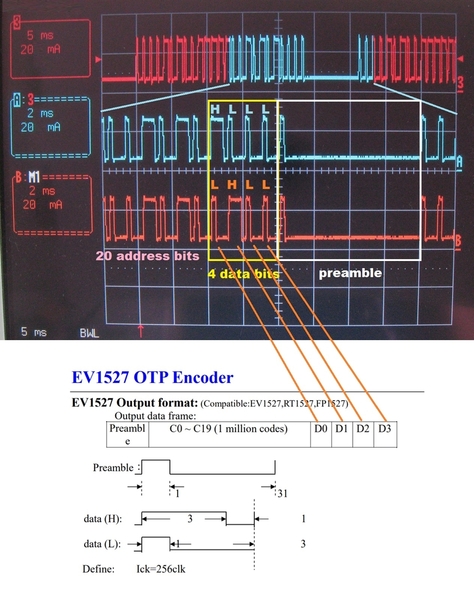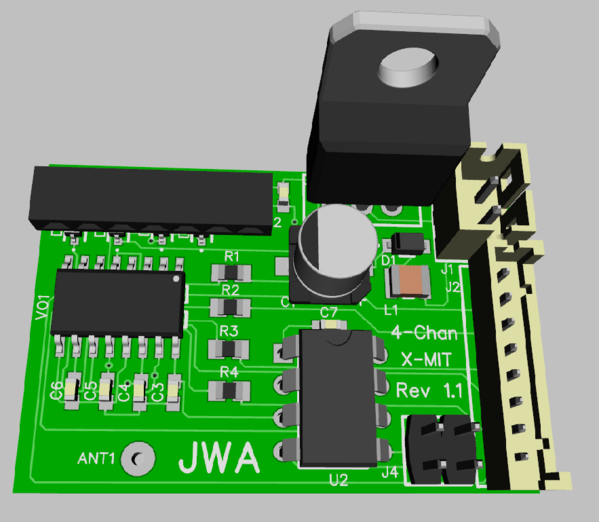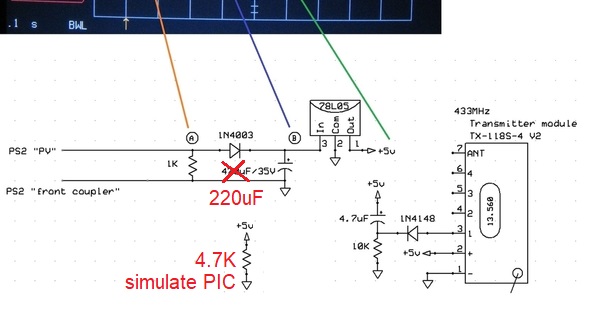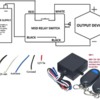And now for something completely different. Explain to me some real-world scenarios/applications of 4-channel operation. What's neat about the PIC is you can queue triggers. So if both CH1 and CH2 are triggered simultaneously, you can queue up the CH2 trigger to present to the TX module after the CH1 trigger is dispatched.
One question is CH3 and CH4 which are separate and do not go thru the PIC. As drawn, the PIC has no visibility into what CH3 and/or CH4 are doing. The TX module can only transmit one command at a time. Now that I think about it, I have no idea what the TX module does if more than one trigger is active at a time (?).
Anyway, getting back to the "universal" flavor of your motherboard, I'm trying to get straight exactly what applications need (up to) 4 channels of triggers and "who" is responsible for insuring that multiple channels are NOT simultaneously triggered/active. ![]()



























